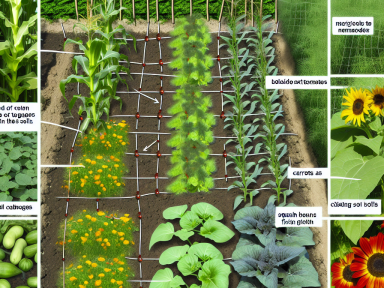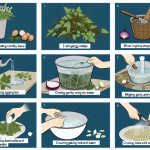The Wisdom of Intercropping
Intercropping, the age-old practice of growing different plants together, isn’t just for maximizing space. When done correctly, it can enhance growth, deter pests, and even improve flavor. Let me share some insights into how you can incorporate this strategic method into your own garden.
The Benefits of Secret Companions
- Pest Control: Certain plants deter specific pests. For instance, marigolds release a scent that repels nematodes, making them great companions for tomatoes.
- Improved Soil Health: Different plants have varying nutrient demands and contributions. Beans, for example, fix nitrogen in the soil, benefiting leafy greens planted nearby.
- Maximized Space: Tall crops like corn can provide the perfect framework for climbing plants like beans, while ground-covering plants like squash can thrive in the shade below.
- Enhanced Flavor: Some gardeners swear by the enhanced taste of certain crops when grown together. For example, basil is said to improve the flavor of neighboring tomatoes.
Practical Intercropping Strategies
1. The Three Sisters Method
This method, valued by Native American cultures, involves planting corn, beans, and squash together:
- Corn: Acts as a natural support for bean vines.
- Beans: Improve soil fertility by fixing nitrogen.
- Squash: Plants with broad leaves provide ground cover, reducing weeds and retaining soil moisture.
2. Herbs as Companion Plants
- Basil: Plant near tomatoes to repel insects and improve growth and flavor.
- Dill: Attracts beneficial insects while repelling aphids – great near cabbages and lettuces.
- Chives: Their strong scent can deter aphids; plant around rose bushes or carrots.
3. Intensive Planting
Use this strategy to ensure constant productivity:
- Lettuce and Radishes: Plant radishes between rows of slower-growing lettuce. Harvest the radishes first, making room for maturing lettuces.
- Cucumbers and Toamtoes: Interplant these to use vertical space efficiently. However, monitor for shared diseases.
- Carrots and Onions: These root crops grow well together and deter each other’s pests–carrot flies and onion flies.
4. Flowers for Pest Management
- Marigolds: Discourage nematodes and deter various beetles, making them ideal near tomatoes, beans, and potatoes.
- Nasturtiums: Sacrificial plants for aphids; good near cucumbers, cabbages, and radishes.
- Sunflowers: Attract aphids away from other plants and can be used as trellises for climbing beans and cucumbers.
Considerations and Tips
- Spacing: Ensure proper spacing to avoid competition for sunlight and nutrients.
- Watering Needs: Group plants with similar watering requirements together.
- Timing: Plant quick-maturing crops with slow growers to maximize harvest schedule.
- Selling: Avoid pairing crops that share common diseases or pests, such as potatoes and tomatoes.
Embracing intercropping strategies can transform your garden into a thriving, self-sufficient ecosystem. By understanding the symbiotic relationships between different plants, you can create a more resilient and productive garden space.




GIPHY App Key not set. Please check settings